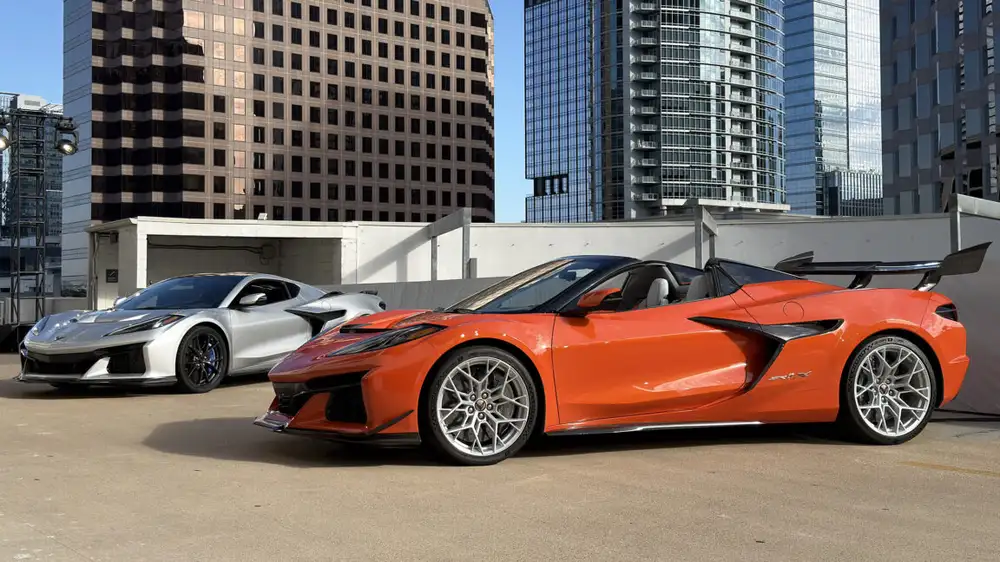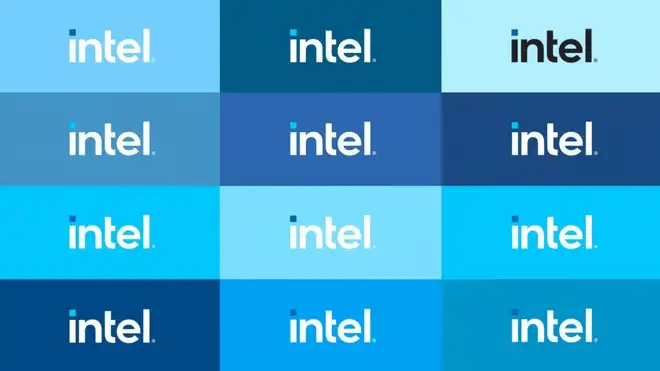At the recent media launch of the ZR1, the most powerful Corvette ever, Chevrolet also teased an even more potent variant set to debut later this year. Dubbed the ZR1X, the latest model arrives after serious anticipation that began swirling when the eighth-gen ‘Vette switched to a mid-engine layout—and especially after the E-Ray hybrid justified the design's enormous center console by filling the backbone with batteries to power a small front electric motor.
Hype online ahead of the official unveil nicknamed the top-spec car "Zora" after Zora Arkus-Duntov, the GM engineer known as the "Father of the Corvette." But instead, ZR1X follows the industry's typical alphanumeric nomenclature, where, as usual, X means all-wheel drive. The ZR1X, therefore, uses the same recipe by complementing the ZR1's 1,064 hp (783 kW) twin-turbocharged V8 with a front electric motor, resulting in a claimed combined rating of 1,250 hp (919 kW).
The same 1.9 kWh battery pack now holds 26 percent more charge than in the E-Ray, which helps bump the front motor's output from 160 to 186 hp (117 to 132 kW) and from 125 to 145 lb-ft (169 to 196 Nm). This allows GM to predict that the ZR1X will achieve a 0–60 mph (0–96 kph) time under two seconds, made possible by all-wheel-drive traction off the line.
The front axle now entirely disconnects at 160 mph (257 kph) rather than 150 mph (241 kph) for the E-Ray, yet the ZR1X's low-drag aero package should still hit the same 233 mph (375 km/h) top speed that the ZR1 achieved at Papenburg, Germany, last year. In fact, Chevrolet purposefully accomplished that top speed run with ballast to prove the future ZR1X's potential.
To rein in that speed, a massive set of continuous-weave carbon-ceramic brake rotors from Alcon (option code J59) measure 16.5 inches (420 mm) in diameter, front and rear, clamped down by GM's first-ever 10-piston calipers. At the Nurburgring's Tiergarten corner, those brakes managed to haul down the ZR1X at a peak of 1.9 G decel from 180 to 120 mph (290 to 193 km/h).
The AWD isn't all about straightline speed, however, and the ZR1X can reportedly handle 1 G of lateral and longitudinal acceleration while cornering—simultaneously. Yet the ZR1X should add around the same weight as the E-Ray versus the Z51 Stingray, which rounded out to just shy of 500 pounds (227 kg). For comparison, the ZR1's official dry weight is 3,670 pounds (1,665 kg) but with 13 radiators supporting a massively capable cooling system, the wet weight likely approaches 4,000 lbs (1,814 kg).
Similarly, the ZR1X will also be available as both a removable hardtop coupe and a powered hardtop convertible—meaning that in its heaviest guise, this American hypercar might push up to nearly 5,000 pounds (2,268 kg).
Even without confirmed pricing, the ZR1X clearly takes a swing at Ferrari's F80, McLaren's W1, and Porsche's highly anticipated but as-yet-unconfirmed next-gen hypercar—and likely at a mere fraction of the cost, given the ZR1's $174,995 MSRP. However, even though Chief Engineer Josh Holder called this "the most intelligent Corvette ever," he also owned up to the challenges of cramming 2.5 times the horsepower of the Z51 Stingray into the same chassis.
Developing the ZR1X therefore required refinements to the E-Ray's software, welcome news after that earlier hybrid variant exhibited some strange behavior almost akin to reverse torque steer due to the front-axle regen programming, plus difficulties handling high-performance loads in anything less than perfect conditions—which occasionally even resulted in the computer fully disconnecting the front axle and switching off the front motor.
New traction and stability programming first needed to cope with the tires deforming significantly under hard acceleration and sending sensors haywire. The ZR1X will also feature typical drive modes for normal driving and wet roads, plus track-specific Endurance and Qualifying modes, as well as a new "Push to Pass" function for unleashing all 1,250 horsepower at the touch of a button. Holder confirmed that while harvesting electrons via front-axle regen, the rear friction brakes will clamp down to improve chassis predictability. But the system also needs to protect internal components from damage, too.
"When you apply the throttle pedal in judicious amounts in a 1,064 hp or 1,250 hp car, it's a very different experience than what a lot of people are used to," Holder told Ars Technica. "We do set torque limits in first and second gear, and it doesn't slow the car down. I think when people hear that, they're a little alarmed, but it's really protecting the driveline because we're well beyond traction limits of the tire anyway."
No word yet on how far the improved battery pack can power the ZR1X in full-electric mode, though the E-Ray could only manage 3 to 5 miles (5–8 km) below 45 mph (72 km/h). Clearly, efficiency and environmentalism took a backseat to performance for this hybrid. Whether or not the C8's chassis could also house another rear electric motor (or two) and a bigger battery pack, Holder and his team hope to build ICE Corvettes for as long as possible. Given the regulatory landscape, how long that will be is anyone's guess. For now, while waiting for deliveries to begin later in 2025, expect another victory lap as the ZR1X goes out and breaks all of the records the ZR1 just set.

 Intel Core Ultra 300 (Nova Lake-S), trapelano i modelli: CPU fino a 52 core!
Intel Core Ultra 300 (Nova Lake-S), trapelano i modelli: CPU fino a 52 core!